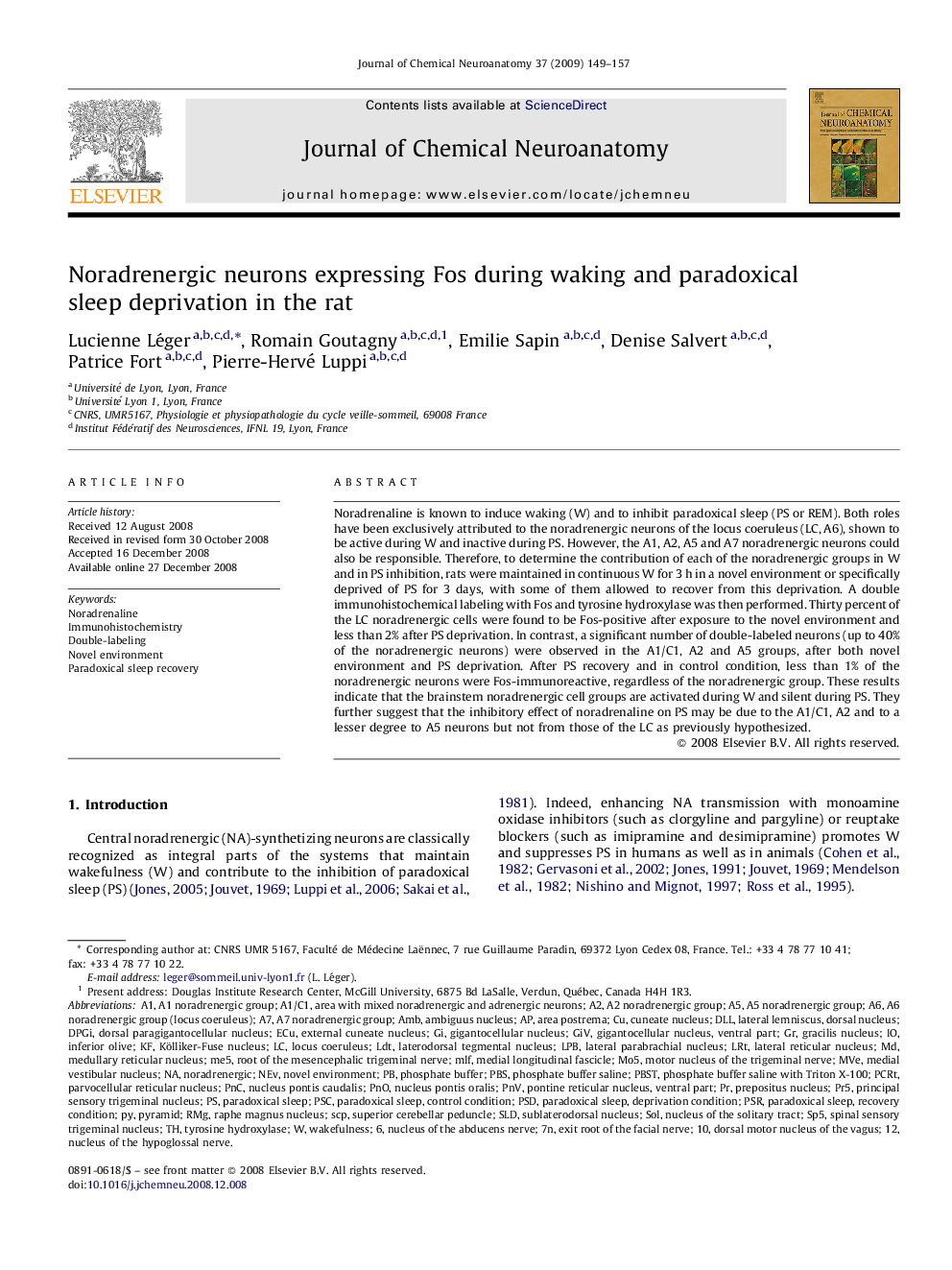| Article ID | Journal | Published Year | Pages | File Type |
|---|---|---|---|---|
| 1989036 | Journal of Chemical Neuroanatomy | 2009 | 9 Pages |
Noradrenaline is known to induce waking (W) and to inhibit paradoxical sleep (PS or REM). Both roles have been exclusively attributed to the noradrenergic neurons of the locus coeruleus (LC, A6), shown to be active during W and inactive during PS. However, the A1, A2, A5 and A7 noradrenergic neurons could also be responsible. Therefore, to determine the contribution of each of the noradrenergic groups in W and in PS inhibition, rats were maintained in continuous W for 3 h in a novel environment or specifically deprived of PS for 3 days, with some of them allowed to recover from this deprivation. A double immunohistochemical labeling with Fos and tyrosine hydroxylase was then performed. Thirty percent of the LC noradrenergic cells were found to be Fos-positive after exposure to the novel environment and less than 2% after PS deprivation. In contrast, a significant number of double-labeled neurons (up to 40% of the noradrenergic neurons) were observed in the A1/C1, A2 and A5 groups, after both novel environment and PS deprivation. After PS recovery and in control condition, less than 1% of the noradrenergic neurons were Fos-immunoreactive, regardless of the noradrenergic group. These results indicate that the brainstem noradrenergic cell groups are activated during W and silent during PS. They further suggest that the inhibitory effect of noradrenaline on PS may be due to the A1/C1, A2 and to a lesser degree to A5 neurons but not from those of the LC as previously hypothesized.
